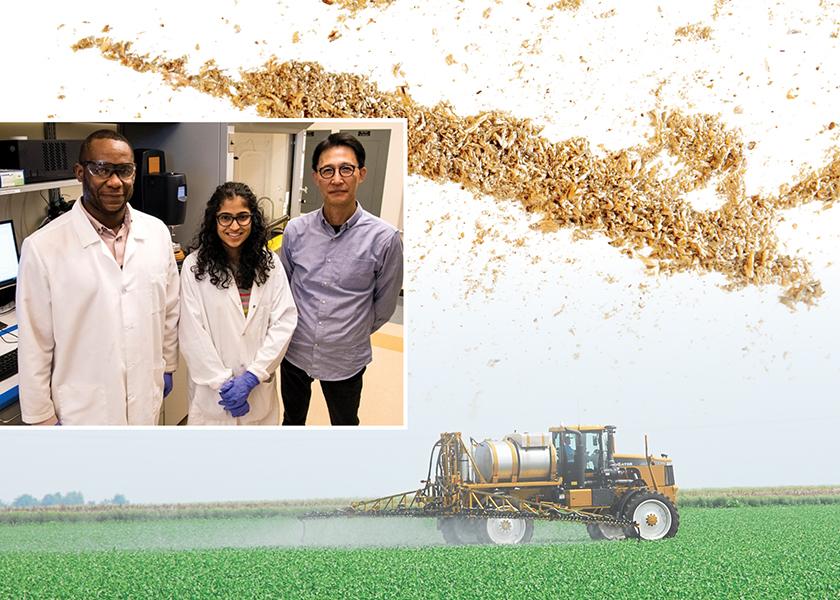From Sawdust to Herbicide Drift Solution

Adjuvant based on wood waste reduces herbicide drift
By Fred Miller and Rhonda Brooks
Today’s sawdust could be tomorrow’s solution to controlling herbicide drift, thanks to work by two young entrepre-neurs, Joseph Batta-Mpouma and Gurshagan Kandhola.
Their research, while students at the University of Arkansas, has led to a patent-pending, product formulation based on biodegradable cellulosic nanoparticles made from wood waste. The nanoparticles can bind with herbi-cides and prevent off-target movement.
Nanoparticles, as the name implies, are minuscule and range between 1 to 100 nanometers in size. One nanometer is one-billionth of a meter.
For reference, a sheet of paper is about 100,000 nanometers thick. A strand of human DNA is 2.5 nanometers in di-ameter.
HOW IT WORKS
Batta-Mpouma and Kandhola’s plan is for farmers to be able to use the product, recently trademarked as
BioGrip, as an adjuvant in herbicide tank mixes.
BioGrip adds weight to herbicide droplets, causing them to fall faster and more directly on target during field ap-plications. It also prevents volatilization of herbicide active ingredients, so they stay put on the weeds.
Batta-Mpouma and Kandhola are working on the commercial application of the BioGrip through their recently launched company, CelluDot.
The pair developed the product formulation in cooperation with Jin-Woo Kim, professor of biological and agricul-tural engineering for the Arkansas Agricultural Experiment Station, which is the research arm of the University of Arkansas System Division of Agriculture.
FROM WASTE TO TREASURE
The raw material being used to develop the product is wood waste that’s readily available from timber companies, Kim says.
The U.S. timber industry generates 97 million dry tons of waste annually, reports the Department of Energy.
Beyond wood waste, Kim is looking at how rice hulls, other grain husks and straw can be used to develop similar technologies.
“They all have the added advantage of being biodegradable,” he says.
No petroleum-derived surfactants are being used in the BioGrip formulation, enhancing its environmentally friendly footprint.
Kim says the technology used to create BioGrip has many potential applications. In addition to agricultural uses, researchers are evaluating the use of nanoparticles in biomedical and manufacturing industries.
BioGrip is in the early stages of development. The team has received several grants, but commercialization timing has not been determined.







